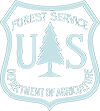Property Protection
Click on a Value below to see what Actions you can take.Expanding Property Protection
Expanding Property Protection is one of the values identified in the Cohesive Strategy in the Southeast. While developing fire management plans managers need to develop a proactive firefighter, community and individual awareness are important in meeting this value. Properly managed forests, fuels reduction, defensible space, community planning and fire resistant construction all contribute to a community that has a greater chance of withstanding a destructive wildfire. To make this work we need to engage those working in this environment and others who have not previously considered themselves stakeholders in wildland fire management.
The following actions contain additional tasks that may be appropriate for you to be a part. Each describes the activity along with links and resources that will be useful in moving forward.
There are 15 Actions Leading to This Value. Click on an action below to see how you can get involved and make a difference.
-
Utilize prioritization in Southern Wildfire Risk Assessment (SWRA) and other efforts to identify and treat wildland fuels to create tactical fuel breaks in areas that facilitate tactical defense of human communities or ecological values and services from wildfire.
Work cooperatively across agency lines to accomplish prioritized fuels treatments.
Utilize SouthWRAP to target fuels treatments.
Provide education and outreach to forest products industry as to encourage treatment of wildland fuels.
- Southern Group of State Foresters (SGSF)
- U.S. Department of the Interior (DOI)
- U.S. Forest Service (USFS)
Use of alternative management techniques to treat wildland fuels where prescribed fire is not feasible or appropriate.
Identify areas where fuels treatments provide significant ecological benefits.
- Southern Group of State Foresters (SGSF)
- U.S. Department of Defense (DoD)
- U.S. Department of the Interior (DOI)
- U.S. Forest Service (USFS)
-
Look for opportunities to increase staffing and training of wildland firefighting (joint academies, MOUs etc)
Increase opportunities for responders wanting wildfire experience.
-
Jointly develop specialized fire suppression equipment.
Increase participation in the DoD Fire Fighter Property program for fire departments.
-
Use alternative management techniques (mechanical, grazing, etc.) to reduce fire loads where fire is not feasible or desirable.
Coordinate fire mitigation/harvest activities between public and private lands.
Compile info on costs and benefits of techniques to reduce hazardous fuels.
Target FEMA mitigation funds in high priority areas to reduce risk.
- EMA (EMA)
- Federal Emergency Management Agency (FEMA)
- Southern Governors' Association (SGA)
- Wildland Fire Leadership Council (WFLC)
-
Work with county/community planners to reduce wildfire impacts through insurance incentives, ordinances and ignition resistant construction.
Work with planners at local and state level to increase awareness of catastrophic wildfire.
Evaluate local use of land use codes and ordinances to mitigate widfire risk.
Work with organizations on actions that reduce risk to wildfire.
- Southern Group of State Foresters (SGSF)
- U.S. Department of the Interior (DOI)
- U.S. Forest Service (USFS)
Utilize and promote SouthWRAP (include web address/link)
- Southern Group of State Foresters (SGSF)
- U.S. Department of the Interior (DOI)
- U.S. Forest Service (USFS)
Create insurance incentives to build fire resilient communities.
-
Increase awareness of community and homeowner responsibility for fire preparedness and prevention.
Educate public on WUI and wildland fire challenges.
Support and actively outreach the “One Message, Many Voices” and similar campaigns.
- Fire Learning Network (FLN)
- Southern Group of State Foresters (SGSF)
- U.S. Department of the Interior (DOI)
- U.S. Forest Service (USFS)
Encourage property owners to activiely manage against wildfire risk.
Use SouthWRAP as a tool for communities to understand their role.
- Southern Group of State Foresters (SGSF)
- U.S. Department of the Interior (DOI)
- U.S. Forest Service (USFS)
-
Develop and implement Community Wildfire Protection Plans (CWPP) and Firewise or equivalent concepts in priority areas.
Create partnerships to support the further development of CWPPs.
Maintain CWPPs in communties through eixsting programs.
Increase the number of grant opportunities for CARs with CWPPs or Firewise communities to help support and maintain community organizations.
- National Leadership Council (NLC)
- Southern Group of State Foresters (SGSF)
- U.S. Department of the Interior (DOI)
- U.S. Forest Service (USFS)
Increase the number of grant opportunities to help support and maintain community organizations.
- Fire Adapted Communities (FAC)
- U.S. Department of the Interior (DOI)
- U.S. Forest Service (USFS)
-
Use technology to inform decisionmakers on wildland fire in a timely manner.
Utilize and promote SouthWRAP (include web address/link)
For more information, visit http://www.southernwildfirerisk.com
-
Work with landowners to manage lands to be resilient to wildfire while supporting traditional forest products markets.
Make policy changes to federal programs to further expand fuels reduction work.
Integrate programs between urban forestry and forest management to target small woodlot management and fuels reduction.
- Southern Group of State Foresters (SGSF)
- U.S. Forest Service (USFS)
Ease access to restoration funding after wildfires on both public and private lands.
Understand impact of taxes to landowners ability to manage lands.
Identify cultural values in local CWPPs.
Utilize SRS info on family forest opportunities to manage for wildfire risk reduction.
Host "Community Days" at Department of Defense (DoD) installations.
Identify cultural values in local CWPPs and related intergovernmental planning documents
- National Association of Counties (NACO)
- Southern Group of State Foresters (SGSF)
- U.S. Department of the Interior (DOI)
- U.S. Forest Service (USFS)
Encourage interactive educational programs that highlight the multicultural heritage of fire in the Southeast.
- U.S. Forest Service (USFS)
Integrate programs between urban forestry and forest management to address wildfire.
Encourage interactive educational programs at both the government and non-governmental levels that highlight the multicultural heritage of fire in the Southeast.
-
Coordinate between landowners and managers to address wildland fire.
Work with the insurance industry on products that motivate homeowners to improve properties
Encourage homeowners to create both managed natural and landscaped plantings with trees and shrubs to reduce wildfire risk.
Create a model fire adapted community concept that results in higer ISO ratings.
- Fire Adapted Communities (FAC)
- Fire Learning Network (FLN)
- The Nature Conservancy (TNC)
Evaluate the establishment of a National Fire Insurance Program similar to the Flood Program
Target and regionalize tools created by the fire adapted communities coalition.
Work with planners/developers to establish best practices at all levels.
Recommend codes and standards for developing and maintaining Fire Adapted Communities
Establish an incentive program for the creation of fire adapted communities through CWPP’s and other comprehensive community planning practices.
-
Keep prescribed fire as a valid management tool through working with regulatory agencies.
Work with regulatory agencies to reduce constraints on prescribed burning.
- Southern Group of State Foresters (SGSF)
- U.S. Department of the Interior (DOI)
- U.S. Forest Service (USFS)
Work with legislative officials to reduce constraints on prescribed burning.
- Prescribed Fire Council (PFC)
- Southern Group of State Foresters (SGSF)
Utilize and promote best burning practices
- Forest Landowners Association (FLA)
- Prescribed Fire Council (PFC)
- Southeastern Association of Fish and Wildlife Agencies (SEAFWA)
- Southern Group of State Foresters (SGSF)
- The Association of Consulting Foresters (ACF)
- U.S. Department of Defense (DoD)
- U.S. Department of the Interior (DOI)
- U.S. Forest Service (USFS)
Continue to support the work of the SERPPAS air quality and prescribed fire working teams.
Work among appropriate agencies to expedite public alerts on smoke related issues.
- Southern Group of State Foresters (SGSF)
- U.S. Department of the Interior (DOI)
- U.S. Forest Service (USFS)
- air-quality-regulators
- wildland-and-structural-fire-departments
-
Encourage greater public smoke awareness through outreach and understanding.
Collect success stories that highlight the benefits of prescribed burning operations compared to wildfires
- Fire Learning Network (FLN)
- Prescribed Fire Council (PFC)
- Regional Strategy Committee (RSC)
- The Nature Conservancy (TNC)
-
Control invasive species that alter fire regimes and ecosystem function.
Look to state forest and wildlife action plans to target high wildfire risk geographies.
Engage landowners in the identification and control/eradication of highly flammable invasive species.
Utilize FS Forest Health Program funds on areas of high wildfire risk.
- U.S. Forest Service (USFS)
Provide education programs/materials for homeowners and landowners that target the most destructive invasives.
-
Support efforts to increase prescribed burning for ecosystem restoration.
Collect accurate statistics on prescribed fire use to aid in planning and insurance underwriting.
- Southern Group of State Foresters (SGSF)
- U.S. Forest Service (USFS)
-
Coordinate with all levels of government on community preparedness and mobilization activities (incl. evacuation).
Increase creation and implementation of community preparedness plans.
Utilize well established programs in the development of CWPPs where none exist.
- Southern Group of State Foresters (SGSF)
- U.S. Department of the Interior (DOI)
- U.S. Forest Service (USFS)
Incorporate CWPPs into the SWRA.
Support readiness and response exercise planning and drills for communities at high risk of catastrophic wildfire.
- EMA (EMA)
- International Association of Fire Chiefs (IAFC)
- Southern Group of State Foresters (SGSF)
- U.S. Department of the Interior (DOI)
- U.S. Forest Service (USFS)










